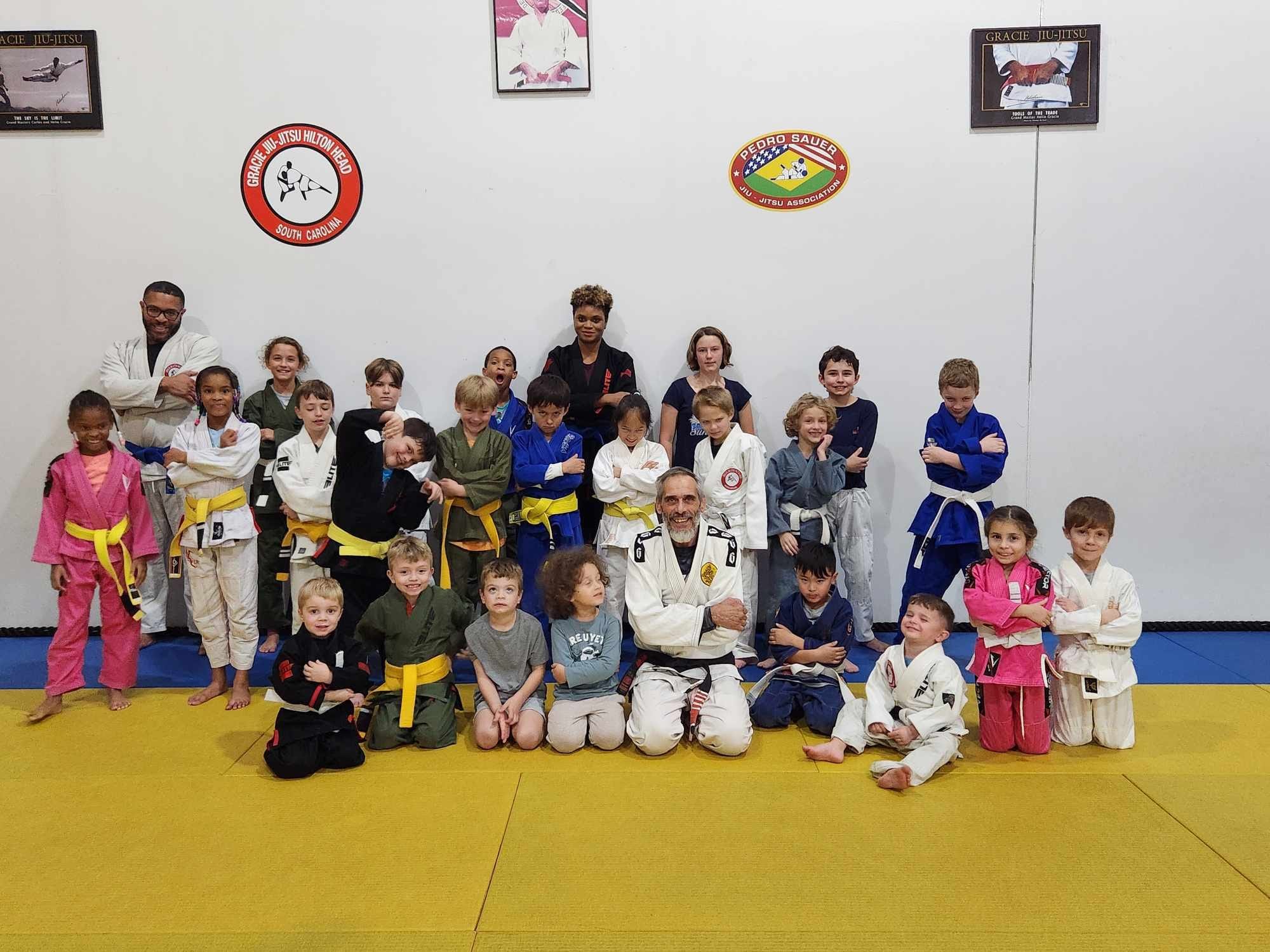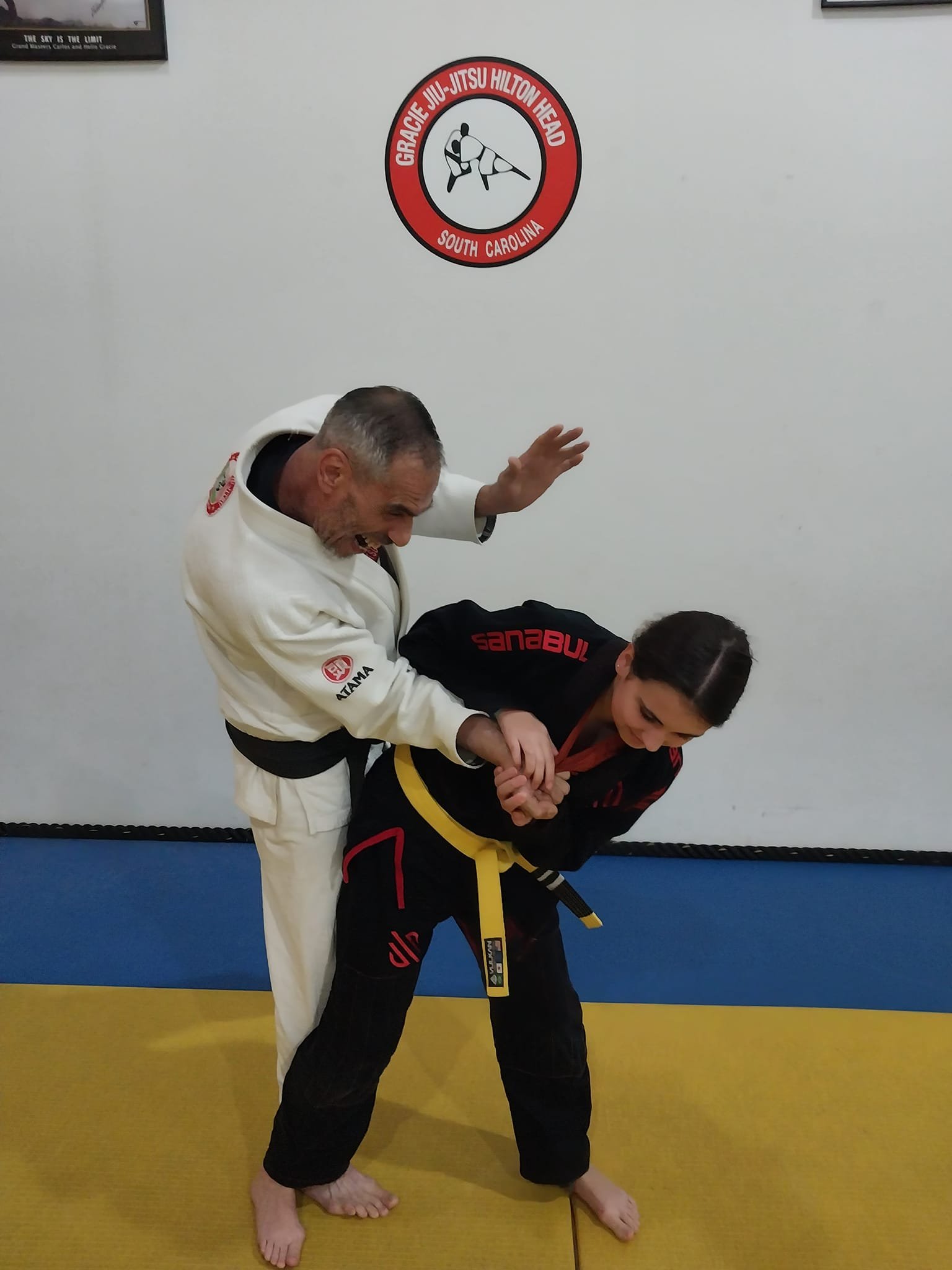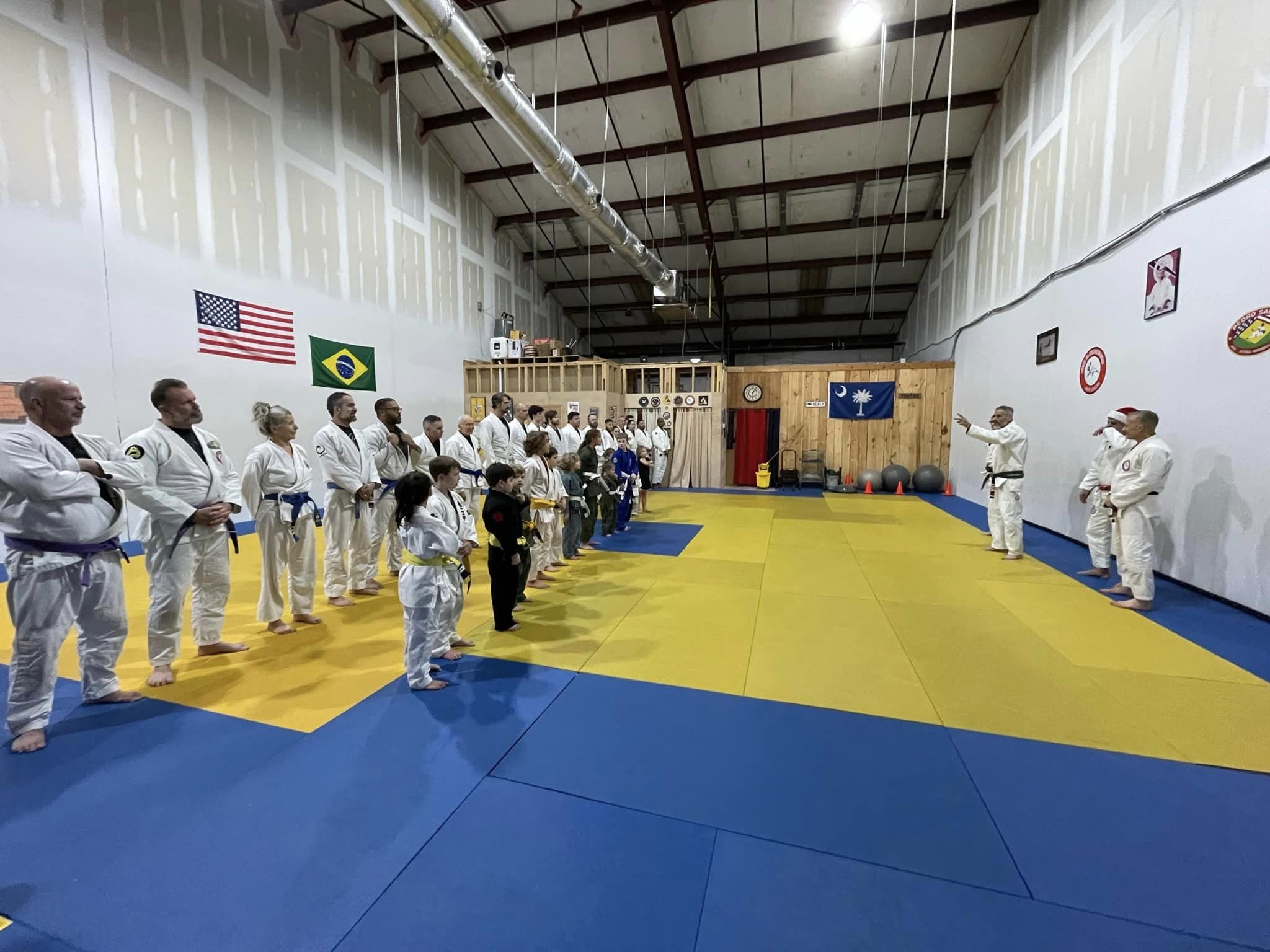Children aged 15 and younger can progress through the following belt ranks:
White
Grey/white
Solid grey
Grey/black
Yellow/white
Solid yellow
Yellow/black
Orange/white
Solid orange
Orange/black
Green/white
Solid green
Green/black
Upon reaching the age of 16, students must transition to the adult belt system. White belts will remain white, while grey, yellow, or orange belts may convert to either a white or blue belt, based on the coach's assessment. Green belts may be promoted to white, blue, or purple belts, also at the coach's discretion. The adult belt progression follows this order: white, blue, purple, brown, and black. Each belt has a minimum time requirement: at least two years as a blue belt, 1.5 years as a purple belt, and one year as a brown belt before being eligible for promotion.
Each belt has five levels: the belt itself, followed by four stripes. Advancement in stripes is based on time, behavior, knowledge of Jiu Jitsu, and performance in competitions.
Ages 4-15
The white belt represents the beginner level.
Children aged 4 to 15 are eligible for the three Grey belts.
Ages 10-15
The Orange belts are for children aged 10 to 15
Ages 13-15
Green belts are designated for those aged 13 to 15.
Why is a Ranking System Important for Children in Jiu Jitsu?
Having a ranking system is crucial for children because it helps keep them motivated during the often challenging process of learning and improving in Jiu Jitsu. Unlike adults, children might struggle to recognize their progress in technique and may not experience the same sense of achievement. The belt promotions serve as a tangible way for them to see their advancement and stay motivated throughout their Jiu Jitsu journey. Children generally respond more positively to frequent promotions, which encourages them to train consistently.
Additionally, the ranking system teaches children about hierarchy, something they might not learn in other environments. The belts clearly indicate a child’s skill level, making it easy for both instructors and peers to understand where each student stands in their development.
The debate over whether a belt system is beneficial for children is ongoing. However, considering that it helps maintain motivation and provides educational value, the use of a ranking system in Jiu Jitsu can be seen as advantageous.
At Gracie Jiu Jitsu - Hilton Head, we reinforce positive behavior by awarding one stripe per school term, typically during the last week. When a child earns their fourth stripe, which generally represents a year of training, they are eligible to move up to the next belt, provided they meet the moral and technical standards set by the coaches. If they do not meet these standards, they will remain at the same belt level with four stripes until further progress is made, as determined by the coaches.
For children who start training part-way through a term, they must train for at least five weeks before receiving their first stripe as a form of positive reinforcement.
Uniform Starting Point:
– White Gi
– White Belt (no stripes)
Ages 7-15
Those aged 7 to 15 can advance to the Yellow belts



